 Pets in Space® 4 by Alexis Glynn Latner, Anna Hackett, Cassandra Chandler, Donna McDonald, E.D. Walker, J.C. Hay, Kyndra Hatch, Laurie A. Green, Pauline Baird Jones, Regine Abel, S.E. Smith, Tiffany Roberts, Veronica Scott
Pets in Space® 4 by Alexis Glynn Latner, Anna Hackett, Cassandra Chandler, Donna McDonald, E.D. Walker, J.C. Hay, Kyndra Hatch, Laurie A. Green, Pauline Baird Jones, Regine Abel, S.E. Smith, Tiffany Roberts, Veronica Scott Format: eARC
Source: publisher
Formats available: ebook
Genres: anthologies, science fiction romance
Series: Pets in Space #4
Pages: 1480
Published by Cats, Dogs and Other Worldly Creatures on October 8, 2019
Purchasing Info: Author's Website, Publisher's Website, Amazon, Barnes & Noble, Kobo
Goodreads
For a limited time only! Pets in Space® 4 is proud to present 13 amazing, original new stories! Join the adventures as today’s leading Science Fiction Romance authors take you on a journey to another world. Pets in Space® proudly supports Hero-Dogs.org, a non-profit charity that provides service animals to veterans and first responders in need. Join New York Times, USA TODAY and Award-winning Bestselling authors S.E. Smith, Anna Hackett, Tiffany Roberts, Veronica Scott, Pauline Baird Jones, Laurie Green, Donna McDonald, Regine Abel, Alexis Glynn Latner, JC Hay, E.D. Walker, Kyndra Hatch, and Cassandra Chandler for another exciting Pets in Space® anthology. Get the stories before they are gone!
Proud supporters of Hero-Dogs.org, Pets in Space® authors have donated over $7,100 in the past two years to help place specially trained dogs with veterans and first responders. Open your hearts and grab your limited release copy of Pets in Space® 4 today!
My Review:
Some of the pets featured in this series may be small, but every book in the collection – and every story in it – is huge. Sometimes literally and sometimes figuratively.
This is a BIG book. At over 1400 pages, it’s a really, really, really big book. Like 30+ HOURS of book. There’s plenty here to sink your reading teeth – or your own pet’s actual teeth, into. Not that all of the pets featured in this series necessarily HAVE teeth, you understand.
And then there’s the supposedly cursed rock, but it isn’t one of the pets. Only the quarry of one.
Like all of the previous books in this series, Pets in Space 4 is a limited run, so if you love science fiction romance as much as I do, it’s worth getting while it’s available, for extended reading pleasure. This isn’t a book you can tackle in one sitting – except possibly on a trans-Pacific flight – if you read very, very fast. There’s a lot of book here to love.
Also, calling the entries in this book “stories” doesn’t really do them justice. The works in this collection are nearly all novella or novellette length. In other words, they are all long enough and meaty enough to have each been released on their own. Reading Pets in Space 4, or any of the Pets in Space collections, is like reading a whole bunch of generally excellent short novels all in one swell foop.
I’ll admit that I haven’t read the whole thing – at least not yet. I’ve been following this series since its inception, and it’s a collection for savoring and dipping into when the mood strikes or when one needs a reading pick-me-up.
So I attacked this the way I usually do. First I dive into the stories that are set in worlds that I’m already familiar with. Which led me to Dark Guard by Anna Hackett, set in her Galactic Gladiators series, Spydog by Laurie A. Green in her Inherited Stars series, Winter’s Prince in Alexis Glynn Latner’s Starways series, and that one with the cursed rock, Star Cruise: Idol’s Curse in Veronica Scott’s Sectors SF series.
They are all excellent, and also completely different. And feature different pets as well. Dark Guard is an exile story. There’s a temporary wormhole, long since closed, and a couple of tribes of slavers that have a lot to answer for. The day is saved in this one by a cyborg cat, named Cat, with that feline tendency to be disobedient and protective at the same time.
Winter’s Prince is all about an amusement park planet, a quest gone wrong, a search for true love and a genetically engineered unicorn. It’s also an excellent followup to my favorite story from the Pets in Space 4 Sampler, The Magic Mountains.
The cybernetically enhanced Spydog Maura, in the story that is of course named for her, knows what’s best for her human and isn’t the least bit shy about making sure it happens – whatever he might think!
And last, but not least from my perspective, the marvelous Star Cruise: Idol’s Curse – my favorite story so far. The story is lovely, the dog Charrli is adorably bouncy, but the rock is ugly. And cursed. Also blessed. Sometimes at the same time. It’s complicated. The rock is complicated. The setting on the intergalactic cruise ship is marvelous, and the romance between the cruise’s events director and the Third Officer is just a perfect little cocktail of a story – complete with paper umbrella.
I’m far from done with this book. I’ve got a couple more entries from familiar series to get into. Then I’ll look for the rest of the cat stories – because my own cats would accept no less. Then I’ll finish with the series entries that I’m less familiar with just to see what new worlds I want to dive into next!
All in all, Pets in Space 4 is an excellent reading time and a more than worthy companion to its predecessors in the series.
Escape Rating A for this out-of-this-world collection!

 To Be Taught, If Fortunate by
To Be Taught, If Fortunate by 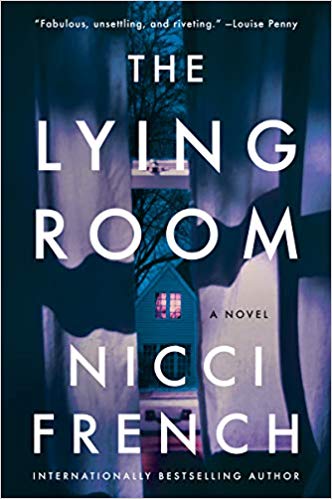 The Lying Room by
The Lying Room by 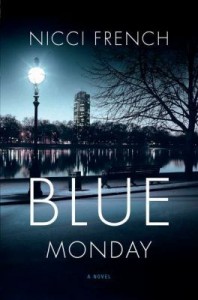 Escape Rating C+: I picked up The Lying Room because I really enjoyed the author’s
Escape Rating C+: I picked up The Lying Room because I really enjoyed the author’s 

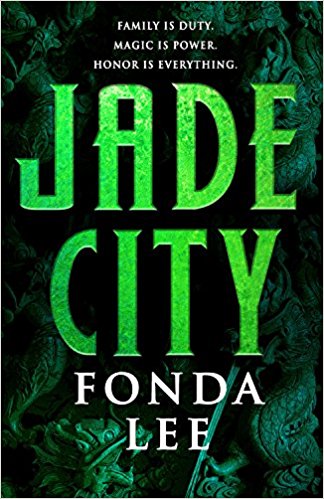 Jade City (The Green Bone Saga, #1) by
Jade City (The Green Bone Saga, #1) by 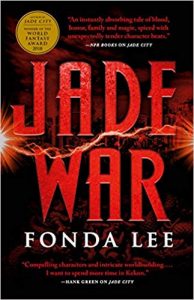 Escape Rating A+: Jade City was a book that didn’t let go of me, and I didn’t let go of it, either. I was listening to this one – and the audio is marvelous – but I couldn’t listen fast enough and eventually switched to the book. Which I finished in one binge-read of an afternoon/evening. Then I immediately started on the second book,
Escape Rating A+: Jade City was a book that didn’t let go of me, and I didn’t let go of it, either. I was listening to this one – and the audio is marvelous – but I couldn’t listen fast enough and eventually switched to the book. Which I finished in one binge-read of an afternoon/evening. Then I immediately started on the second book, 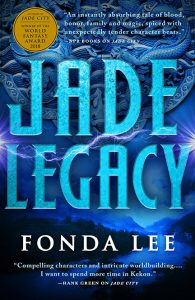 The
The 
 Current Giveaways:
Current Giveaways: Blog Recap:
Blog Recap: Coming This Week:
Coming This Week:















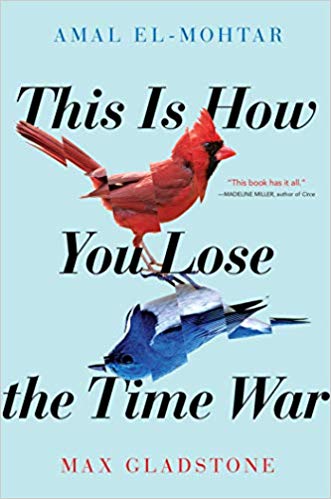 This Is How You Lose the Time War by
This Is How You Lose the Time War by  Sten by
Sten by 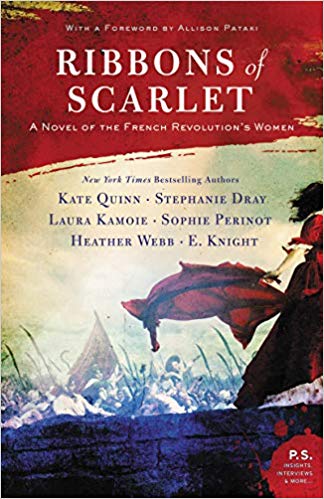 Ribbons of Scarlet: A Novel of the French Revolution's Women by
Ribbons of Scarlet: A Novel of the French Revolution's Women by 

